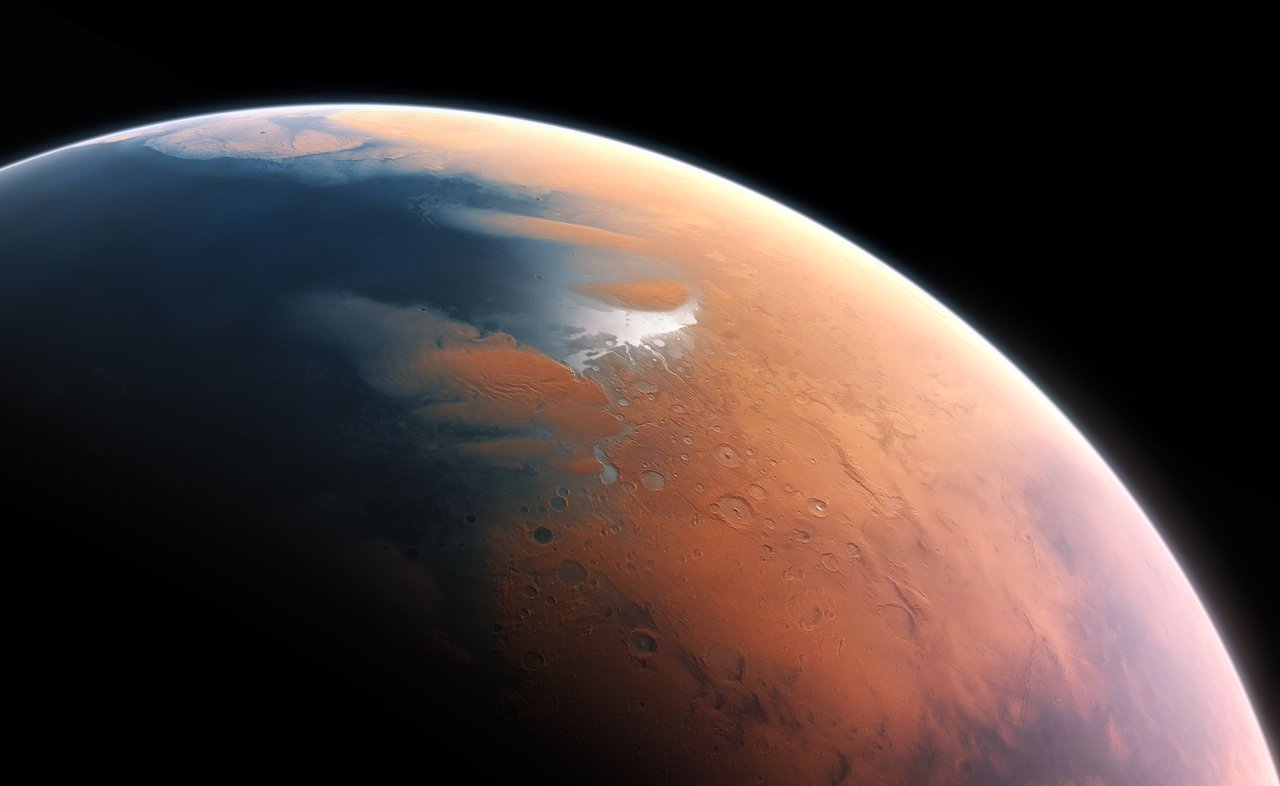Researchers at Australia’s Curtin University have discovered evidence of a massive impact on the Martian surface after 4.45 billion years ago. This may not seem like a surprising revelation – after all, we know that there were several large impacts on Mars, like Hellas and Argyre, and we know that large impacts happened frequently in the early solar system – so why is this a big deal?
The short version is that it challenges our understanding of when Mars could have sustained an environment capable of supporting life – that is, a habitable environment – effectively shortening the window for possible life on Mars. Let’s dig into the science here to see if we can’t uncover a bit more that’s interesting about this story.
First, let’s get a bit of context. The story focuses on the study of the mineral zircon, a zirconium silicate mineral (ZrSiO4). Zircons can form in most kinds of igneous rocks, and larger zircons typically form in metamorphic rocks. The mineral is chemically, physically, and thermally robust – meaning that once it’s formed it tends to stick around and there’s not a lot that changes it. To a geologist, this is exciting because it means that zircons tend to preserve records of the environments they formed in, even when they’re part of a rock that has been extensively altered. Particularly for the early records of planets, where rocks have generally been metamorphosed, melted, weathered, recycled, or otherwise destroyed by nature and the ravages of time, zircons can still preserve records of the environments they formed in.

On the Earth, the oldest materials from Earth are zircons that have been incorporated into a much younger sandstone. Specifically, I’m talking about zircons in the Jack Hills sedimentary rocks of Australia. The rocks that contain the zircons are only ~3.0 billion years old, but some of the zircons are as old as 4.4 billion years. We know that these zircons formed in a different rock that was weathered and recycled, and the zircons were incorporated into the younger sandstones and conglomerates, which were then buried and metamorphosed. By studying the chemistry of the ancient zircon grains geologists have been able to find clues about the earliest history of the Earth, including the presence of liquid water on the surface by the time that these zircons had formed. To date, this is the best evidence we have for the earliest stable, habitable surface on the Earth, and we only know about it from studying this incredible mineral.

Now, let’s talk about the zircon grain from the Curtin study. The grain in question was a single fragment included in a martian meteorite breccia. The meteorite, Northwest Africa (NWA) 7034 which has been nicknamed “Black Beauty,” is the only sedimentary rock in our collection of meteorites from Mars. Black Beauty is classified as a martian basaltic breccia (polymict), which means that it is a rock made up of pieces of other rocks just like the formations in the Jack Hills on Earth. By studying the rock we can learn a lot about ancient environments on the surface of Mars. Many of the fragments are pieces of the ancient martian crust, the basaltic surface that the planet first formed. Zircon fragments like the one reported are a minor part of Black Beauty, and the one in question is one of the oldest so far identified, with a formation age of 4.45 billion years ago. It also happens to be twinned – a change in the mineral structure where the mineral framework is mirrored across a flat plane in the crystal. The specific kind of twinning in this mineral is known to be related to shock deformation – the kind of change that happens during a large impact event. We know that forming this kind of twinning in zircon requires pressures greater than 20 or 30 gigapascals (that is, more than 20-30 x 10,000 times the Earth’s atmospheric pressure); this kind of impact pressure is related to a very large meteorite impact.

Big deal, right? As we stated at the top, we know that there were numerous large impacts on Mars early in the planet’s history. Here’s the rub though – researchers studying the surface and atmosphere of Mars have argued for a habitable surface environment to have formed by 4.2 billion years ago. Critical to this interpretation is an assumption that large-scale meteorite impacts had ceased on Mars by 4.48 billion years ago – 30 million years before the zircon grain formed. Although the date of the impact that deformed the zircon grain is unknown, it had to be after the mineral’s formation. This directly contradicts the assumption of the early surface and atmosphere models, pushing the formation of a stable, habitable, surface environment later in the history of the Red Planet.
What does all of this mean? Well, the research is ongoing, so there is a lot that we don’t fully understand about Mars’ early climate and the origins of life. However, the researchers at Curtin argue that the evidence for when life could have originated on Mars is younger than when life could have originated on the Earth. Combined with the end of habitability on the surface of Mars when the planet dried out, this narrows the window for when life could have evolved on the Red Planet. So, did life evolve there? The jury is still out, so we don’t really know, but the evidence now suggests that if it did come about then life on Mars likely originated after life on the Earth, and probably didn’t stick around for very long.
Top image: An artist’s impression of what Mars might have looked like during its early, wet period circa 4 billion years ago. Credit: ESO/M. Kornmesser

